Singing the praises of the cheap and cheerful LDV Pilot
Posted by Chris Graham on 2nd April 2024
Peter Simpson meets a man with a passion for the LDV Pilot, who is building an impressively varied collection of these trusty workhorses.
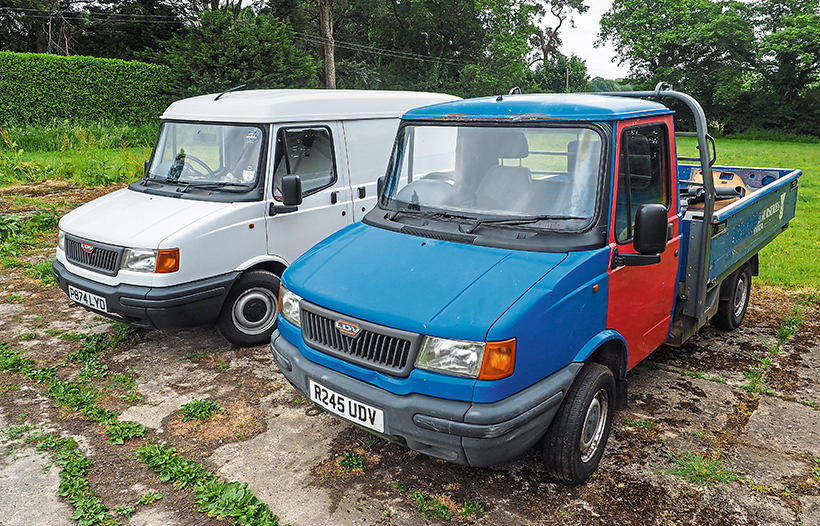
LDV Pilot: A 1990s van and pick-up. The van was new to two builder-brothers from Chard, while the pick-up spent its working life at a nursery near Exeter.
I once heard someone describe driving an LDV Pilot back in the day as not dissimilar to staying in a Travelodge overnight. Both did the job fine but, in both cases, most observers would guess that the purchase was funded by someone else!
When introduced as the Austin-Morris Sherpa in 1974, the van which would finally translate into the LDV Pilot was hardly cutting-edge. The van market had moved on dramatically in the 1960s due mainly to the all-conquering Ford Transit’s arrival in 1966 and, while the Bedford CF of 1970 wasn’t universally approved-of due mainly to its belt-driven overhead cam it, too, was a more modern package and generally considered better. And by the time it had become the LDV Pilot in 1996, the former Sherpa wasn’t just like something from another age; it really did look and drive like something from the 1970s! It was a pretty-much totally price-driven purchase for the domestic UK market. Oh, and the revised frontal treatment that accompanied the change from LDV 200 to LDV Pilot, was as much about meeting tighter pedestrian safety rules as modernising appearance.

This 2002/52 Pilot has had new gutters and some paintwork but is substantially original, and was new to Torbay District Council.
It did, though, have one or two plus points. One was that, being narrower than many rivals, it could get down some alleyways and so on which they could not. The simple, no-frills mechanical layout also appealed to some, along with the widespread use of tried and tested (albeit old) BL-era components. And finally, the LDV was quintessentially British which, along with the price, appealed to some types of fleet such as local authorities and water boards, plus the police and armed forces. They were also, of course, popular with the Post Office. Relatively few, however, were bought by individual buyers. In short, it was a cheap van designed to do a job, but that was about it.
Nowadays, apart from caravanette conversions, LDV Pilots are rare – most have rusted away or been worked into the ground. They do, though, now have a fan-base among enthusiasts, one of whom is Devon-based Andrew Leonard, who has assembled quite a collection. That name may well be familiar, as Andrew also has several lorries that have featured in Classic & Vintage Commercials over the years, including a fabulous ex-SWEB Leyland Cruiser and AEC Mandator which were on the September 2023 and February 2024 covers, respectively…

The 2002 Pilot has a Peugeot DW8 engine which is accompanied by rather more electronics than the earlier models. The timing belt was changed when it returned to the road in 2020.
The vans
But it’s the LDV collection we are looking at here. This started with L793 SAV; a 1993 Leyland DAF 200 with Perkins Prima diesel engine that was new to Anglian Water. This van was bought from a specialist dealer who’s got it from the water company – most likely via British Car Auctions Peterborough. He kept it for 15 years – it was, apparently, the “dearest van I ever bought, but also the best.” Eventually, however, the 200 got to the stage where Andrew needed to replace it, but after he sold it, it was restored to an extremely high standard and now lives alongside an equally well-restored 200 chassis-cab and a Maestro van…
Andrew had, however, already got two replacements lined up. The first was 1996 Pilot P874 LYD. He bought this from two builder-brothers based in Chard, Somerset, who had owned it from new and for whom it was the last in a succession of similar vans which started with J4s. When he initially enquired, the asking price was around twice what Andrew wanted to pay, so he left his offer on the table to be considered. Three months later that offer was accepted. This van has a Peugeot XUD engine which was fitted when the Perkins engine stopped being available due to tightened emission regulations. Being indirect-injection, the XUD motor is quieter than the direct-injection Perkins unit, though the latter is more economical and, in Andrew’s opinion, “better than the Peugeot XUD, if you can cope with the smoke.”
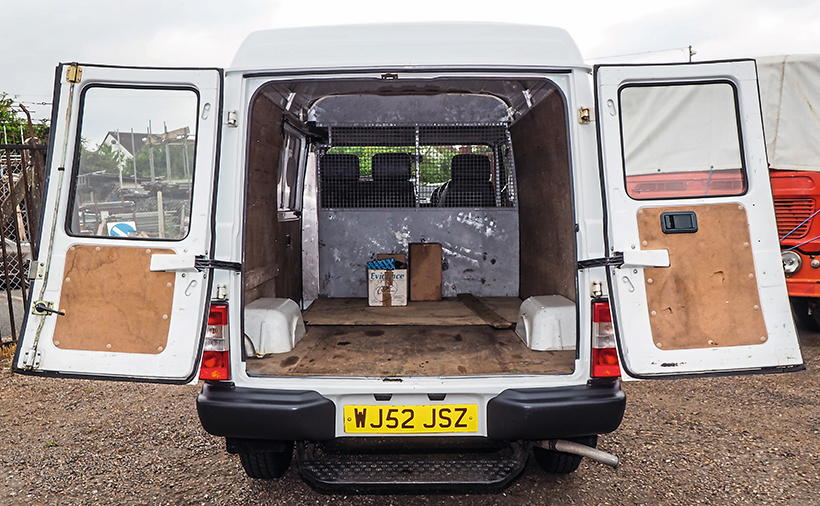
Wide-opening rear doors, but note the BL-era internal handle, as used on the Austin Maxi and Morris Marina…
The other, younger Pilot – registration WJ52 JSZ – has the Peugeot DW8 engine (the last used in Pilots) and was new to Torbay District Council. Andrew suspects it may have been used for housing repair/maintenance work. He bought it in 2010 from a chap based in Princetown, up on Dartmoor, following an advertisement in Autotrader; the principal attraction being the low mileage – just under 60,000. However, once bought it was stored for 10 years, due to the Leyland DAF still being available and then the arrival of the 1995 Pilot. The 1995 van also seemed in better condition, mainly because the later van’s roof guttering was very rusty, and Andrew suspected that this would necessitate the typically-difficult, three-skin welding repair.
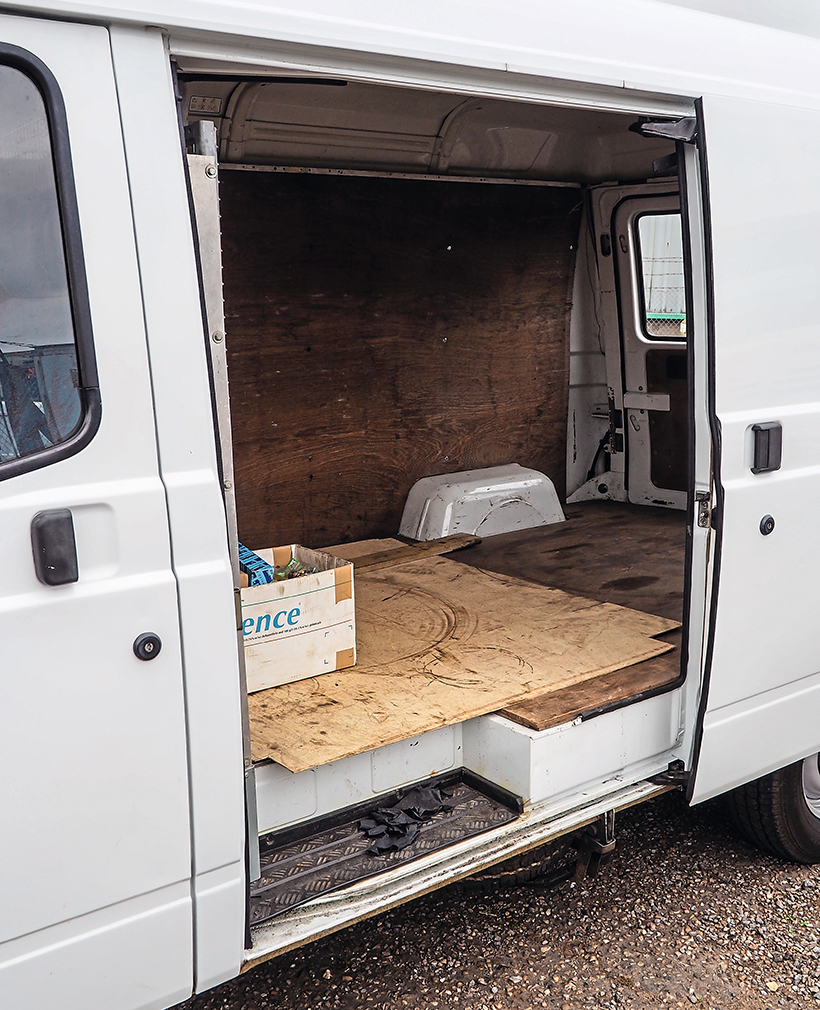
Side-loading door could be specified for either side, both sides or deleted completely; the relatively low-tech LDV production line was adaptable and could incorporate special features.
However, when he found time to look at it properly, he discovered that a, the guttering is one-piece and simply spot-welded on, and b, he already had a complete set of replacements in his stock of parts. These had cost him £2.50 each, when the local dealer was having a clearout; a price too good to pass up! With that discovery, the old gutters were soon knocked off, and replacements spot-welded into place. Then it was a case of removing the typical dents and similar minor damage which most working vans pick up, followed by repainting both sides.
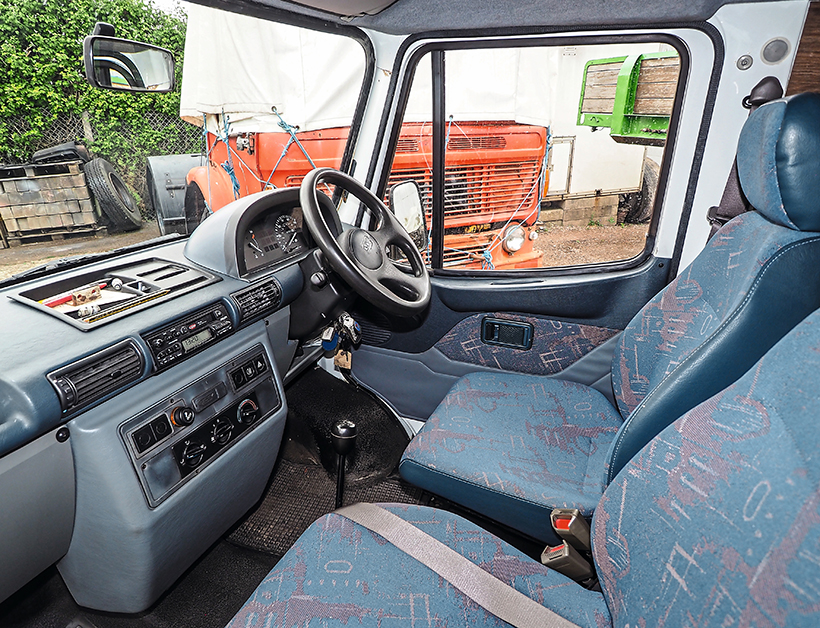
The cab. Anyone fancy a game of spot the BL-bit?
This work, which resulted in the tidy van we see today, was completed in 2020, since when the van has been Andrew’s back-up, and still has only 62,000 miles on the clock. Most of its use has been local, though on one occasion Andrew did use it for a run up to Rush Green Motors to collect some parts. On this run it returned “high 30s” in terms of economy, and seemed happy enough to cruise at 70mph. Andrew has made one change to improve usability; the wire mesh that was behind the cab area has been replaced with a proper bulkhead taken from a rusty ex-Royal Mail van which he bought for spares. Incidentally, I’ve seen the aforementioned red van, and it really was beyond viable restoration!
A pair of pick-ups
The mailvan also came in handy when it came to restoring the next Pilot in the collection; 1997 R245 UDV. This is a relatively recent acquisition, from a nursery in Exeter, where it was latterly being used to block off an area no longer in use, and prevent vandalism. Sadly though, the vandals had taken their frustration out on the pick-up, and smashed everything they could within the cab. It came to Andrew’s attention via a mate who, apparently, spotted it while returning from a rugby match and immediately thought of Andrew! Andrew made contact with the lady who owned the nursery, and she made a note of his details and said she would be in touch. Three months on she still hadn’t, so Andrew ‘phoned again and, this time, was invited over to take a look. She agreed to sell, but then asked if he would also be interested in “the other one”, with a gentle hint that it might be a case of buying both or buying neither. This turned out to be a 1990 Leyland DAF 400 that was parked in a greenhouse. Andrew agreed, and the 400, though in need of restoration, is actually a very good starting point, having covered just 39,000 miles from new. It isn’t, however, really core-interest to Andrew, and he would therefore be willing to move it on; call him on 07970 680140 if you’re interested.
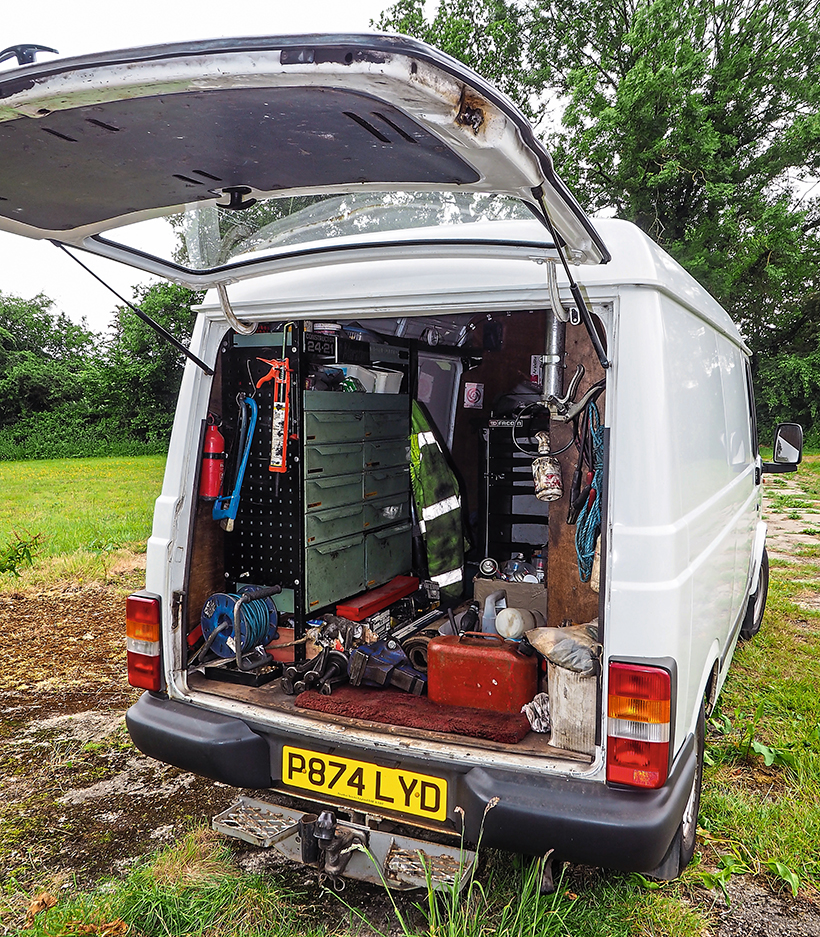
Here’s another example of LDV flexibility – the 1996 van has a one-piece, top-hinged rear door, presumably because that’s what the original owners wanted.
Initially, Andrew saw R245 UDV as a spares donor. However, as often happens, he found that it was actually in better condition than at first thought. He also realised that he already had most of the stuff needed to return it to the road, so it’s now under restoration as a sort-of background project. Interestingly – and perhaps somewhat optimistically – the paperwork describes it as a ‘Pilot Premium’ pick-up, though what luxuries it had to justify this certainly aren’t obvious! It might possibly be down to the Ingrimex dropside body; though fitted on the line at the LDV factory in Washford Heath, Andrew thinks a more basic type of dropside might also have been available.
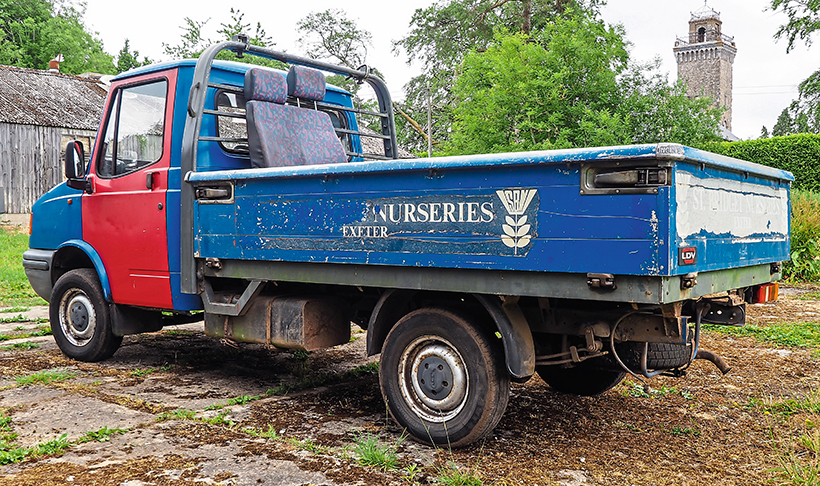
LDV Pilot Premium – though what, exactly, the Premium spec level gave really isn’t clear…
Anyway, the Pilot Premium started easily enough with a new battery and a few improvised wiring repairs, and it’s now back in proper running order having had much of the cab interior renewed using parts from the mailvan including, as you’ve probably guessed, both cab doors! Work still to be done includes further cab renovation and, of course, a cab repaint.
And finally, we come to the grey Pilot which was under restoration at the time of my visit, but has since been completed – albeit in a slightly different form. R240 WYD had probably been a cattle float from new, and was bought from a local farmer after being off the road for about four years. Renovation involved extensive welding to the cab, in particular the steps and floor. The initial plan was to keep it as a cattle wagon, but Andrew had second thoughts because he doesn’t actually keep cattle, so it would have been of limited use. Instead, another Ingrimex dropside body has been fitted. The cattle float-turned-pick-up is now tested and running, and will be out and about in 2024.
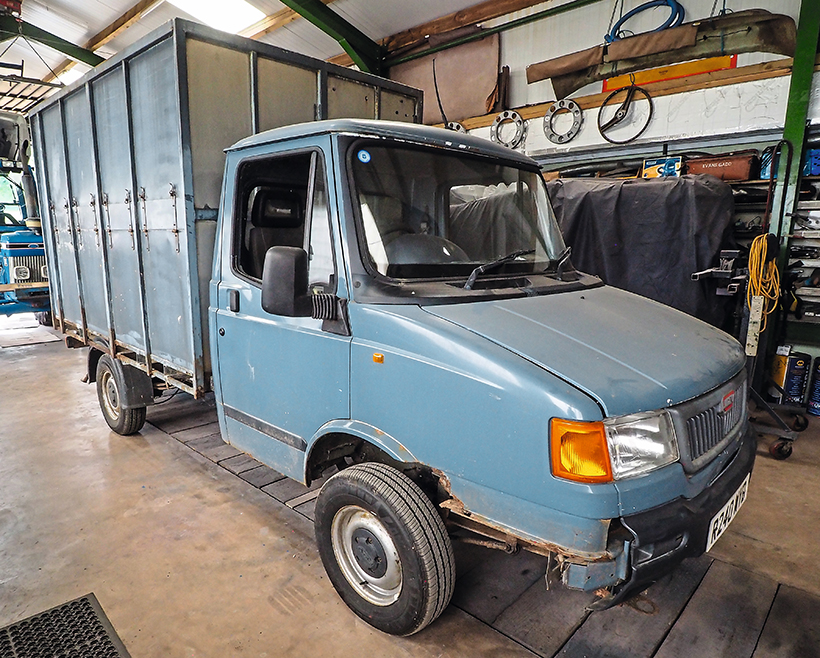
The LDV Cattle float under restoration; since this photo was taken, the cattle body has been replaced with a dropside.
Spares and stuff
Andrew is under no illusion about the Pilot range’s shortcomings; the overall driving experience is “as dreadful as they ever were.” Realistically, leaf springs and box-based steering all impact. But what he does like is their basic simplicity; the 52-plate van is a bit more complex, but the older ones are all straightforward with a refreshing lack of electronics. They are dead-easy to maintain and very traditional in terms of what’s needed; and those ‘needs’ include a grease gun! Parts sourcing requires a bit of knowledge; a few years ago Pilot parts were, seemingly, everywhere including panels. In fact, the latter were often the ones which buyers of job-lots didn’t really want but took to get what they did need. Nowadays, though, things are a bit different. Most mechanical stuff can still be found, though knowing what cars used the same items sometimes helps.
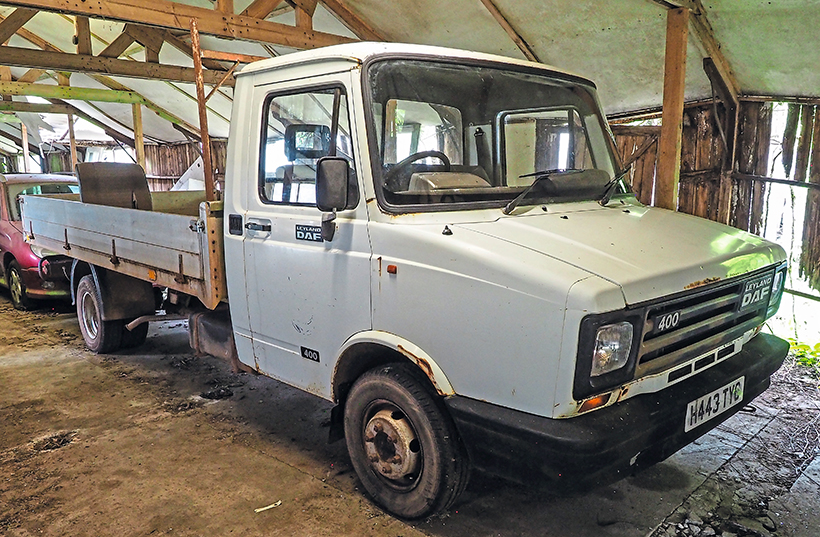
This Leyland DAF 400 pick-up was acquired with the blue Pilot, but is now available for sale.
There is, though, now a specialist supplier of all things Freight Rover and LDV by the name of Sean Turnbull; he covers the whole range of LDV 200 and 400 variants from Sherpa to Pilot and Convoy, including body panels imported from Turkey where production continued under the BMC brand after it ended here, and decent quality pattern parts are also available. To find out more, go to seanturnbull.co.uk call 07710 817595, email seanturnbull@hotmail.co.uk or find seller 400 Convoy on eBay.
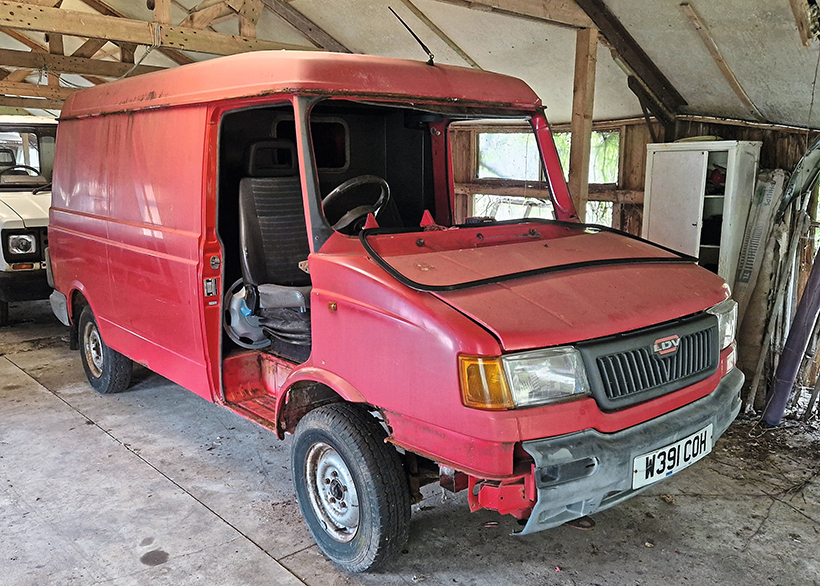
This terminally rusty ex-Royal Mail van is beyond restoration, but is proving invaluable as a source of spares.
So there we are. Few would claim that these vans were ever the best thing since sliced bread, or that they didn’t have significant shortcomings compared to other products of the era. But the facts remain that they sold in sufficient numbers to be seen on most street-corners, they served a purpose and provided an extremely cost-effective means of transport, especially in cases where travelling long distances wasn’t the priority. They were there, and preserving the past surely shouldn’t just be about preserving the best?
This feature comes from the latest issue of Classic & Vintage Commercials, and you can get a money-saving subscription to this magazine simply by clicking HERE

Previous Post
In praise of the Ford TW-15, the baby giant!
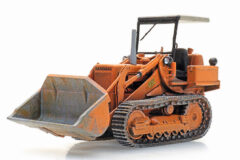
Next Post
New diecast and resin models of vans, fire engines and tractors



